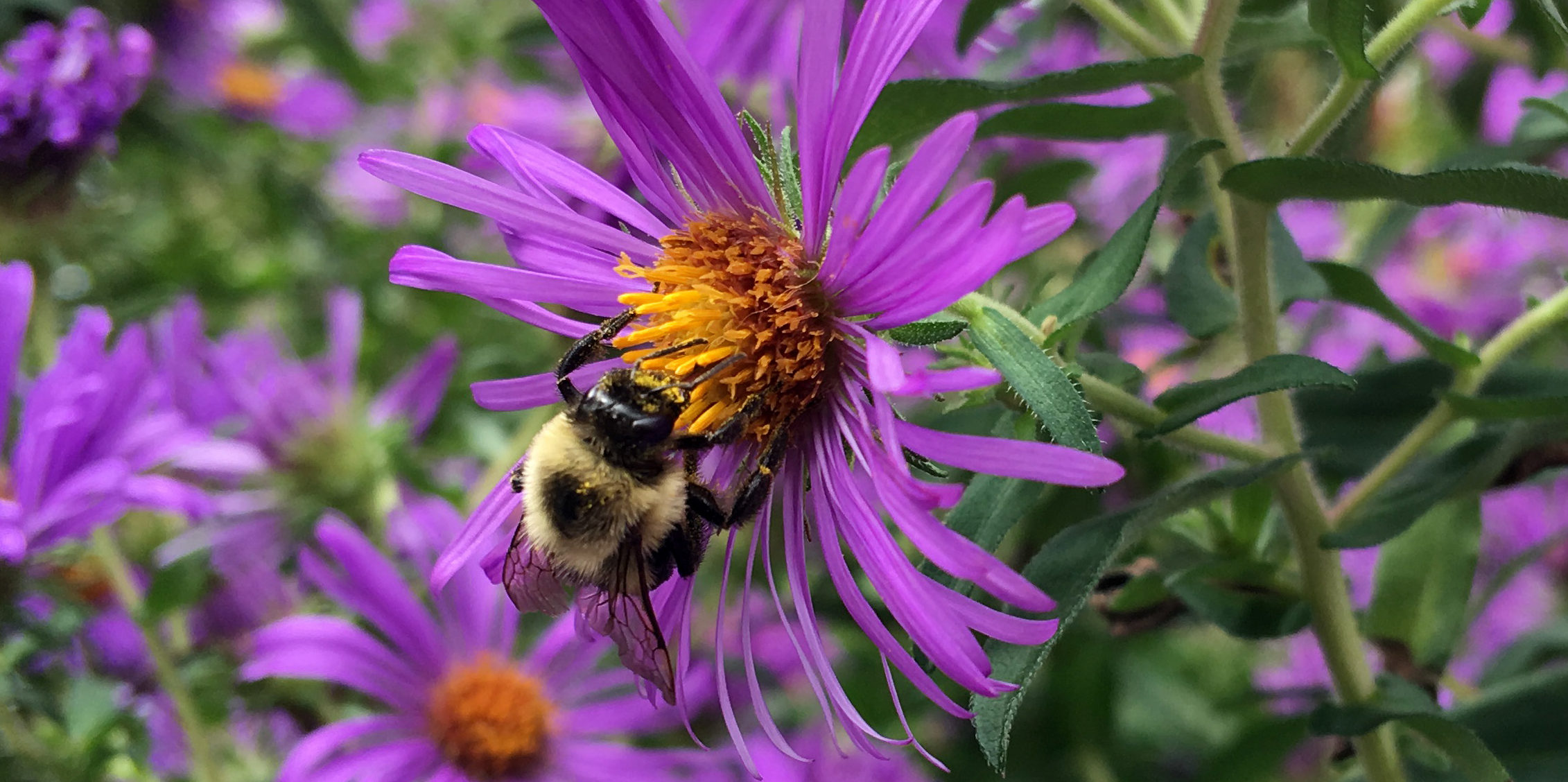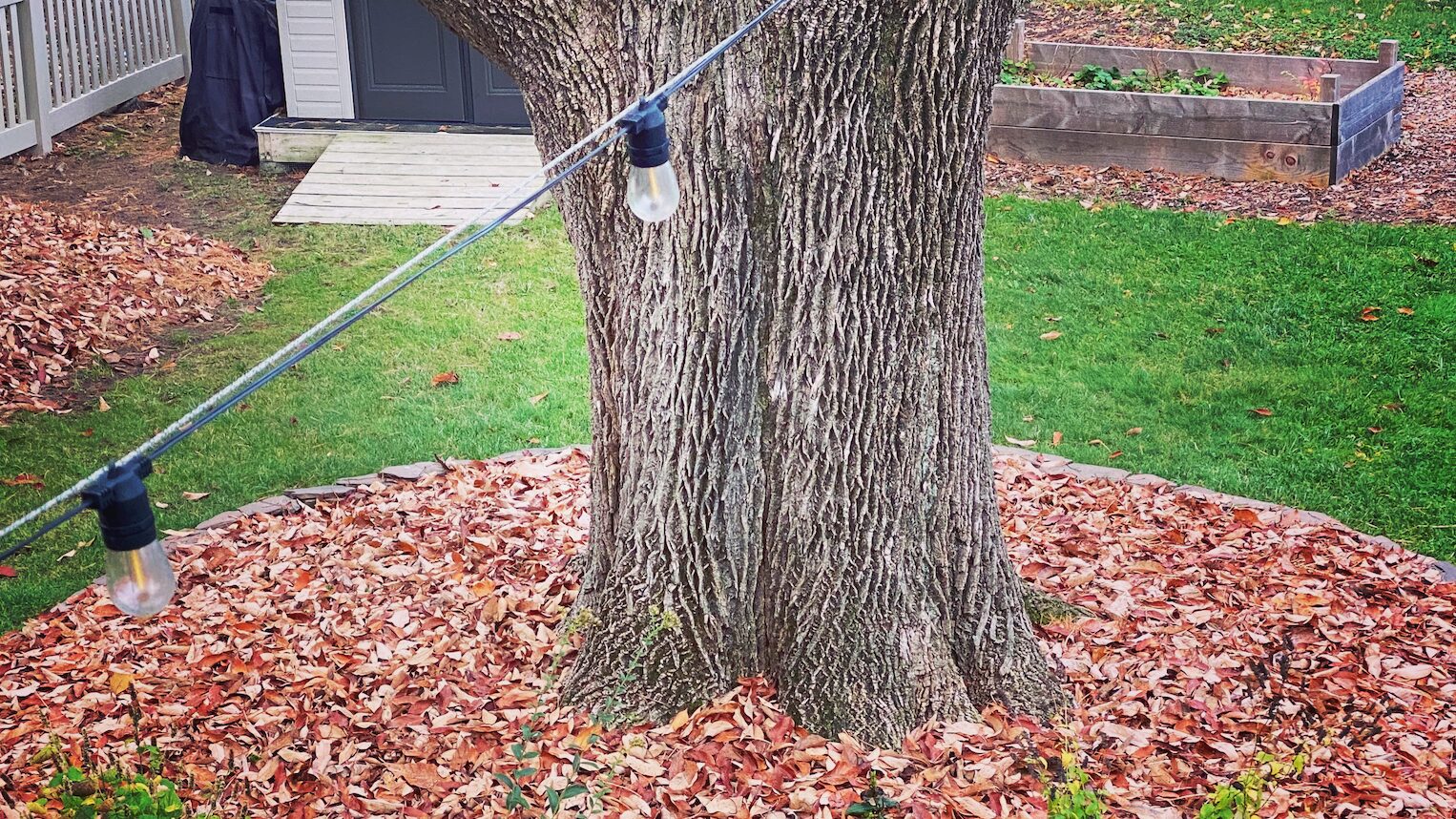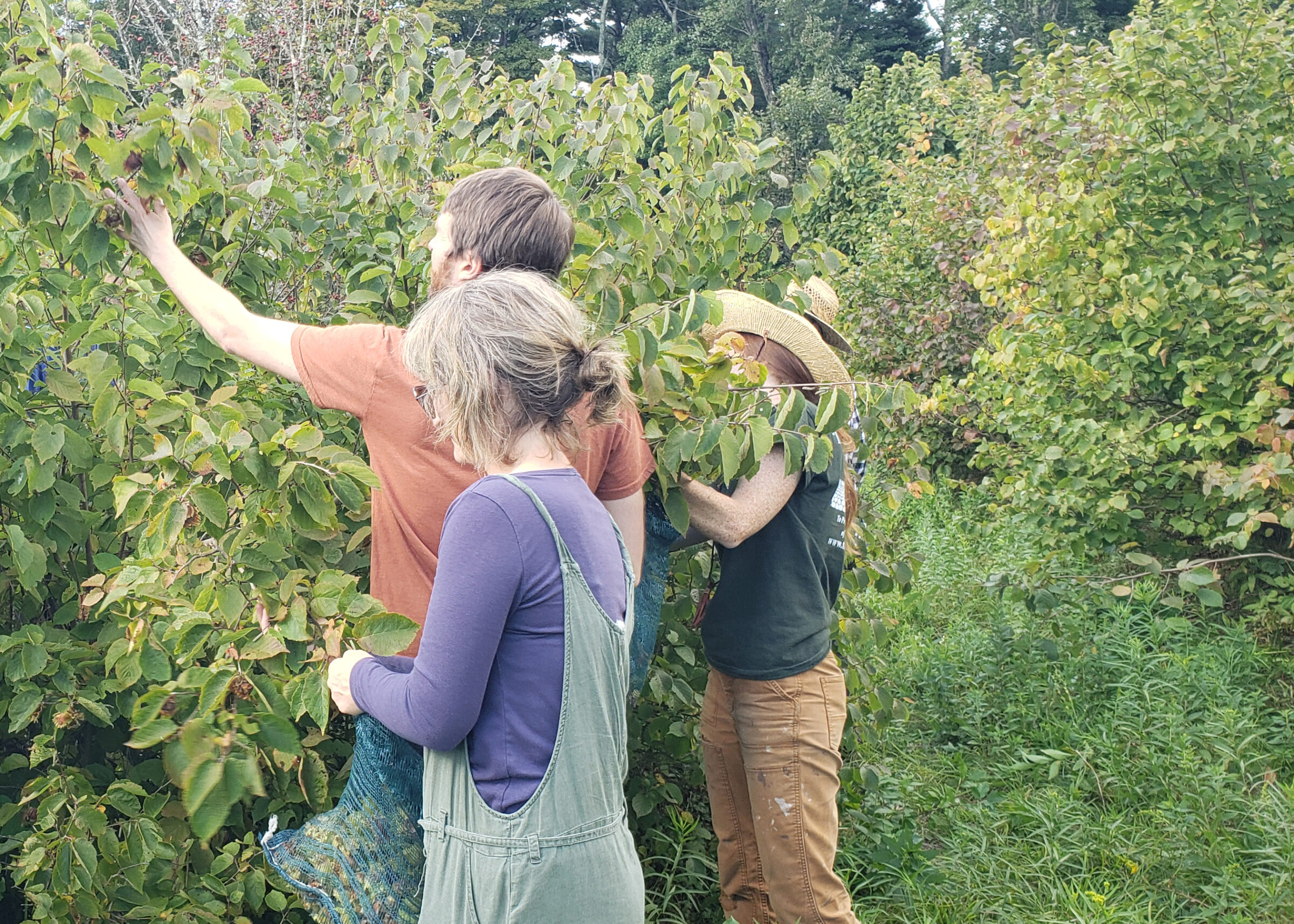
Plant Profile: New England Aster
A Valuable Late Bloomer
New England Aster, Aster novae-angliae
The transition into fall is characterized by shifts in color. The vibrant blooms of tickseed (Coreopsis spp.), bee-balm (Monarda didyma), and butterfly weed (Asclepias tuberosa) are replaced with the deeper reds and golds of red maple (Acer rubrum), serviceberry (Amelanchier canadensis), and viburnums (Viburnum spp.). But one plant that will help your garden keep a striking splash of color well into autumn is the New England Aster.
The New England Asters outside of our office grow almost six feet tall. For much of the season they look like a clump of weeds—tall, leggy stalks with long, fuzzy green leaves—until they pop like fireworks into an impressive display of bright purple flowers. As the early- and mid-summer flowers are fading, the asters become a focal point for the last lingering lunches outside on the front stoop. It isn’t just the color that draws our attention, it is the constant movement around the flowers. On close inspection, hundreds of insects swarm the flowers. And at any given moment, it is almost certain that a Monarch or Swallowtail butterfly is resting somewhere in the dense crown of blooms.

Ecologists have recognized this plant as a critical fall nectar source for pollinators, especially native bees and Monarch butterflies, as they stock up for their fall migration to Mexico. It is a larval host for the Pearl Crescent (Phyciodes tharos) and Checkerspot (Euphydryas editha bayensis) butterflies, and deer resistant (a big plus for many north-east gardeners!). According to the USDA, it is native to much of North America, with a range that spans the continent from Quebec to Mississippi. It prefers moist, rich soils, but is easily grown in a broad range of conditions, thriving in full sun or light shade in all but the driest soils, and it self-seeds in favorable conditions.
RDG has used this plant in a variety of settings, from showy urban pollinator strips to large residential landscapes. It is a fairly versatile plant that adds some late-summer spark to rain gardens and perennial borders, and appreciated by both legged and winged creatures.
-Rachel Lindsay



Comments (0)